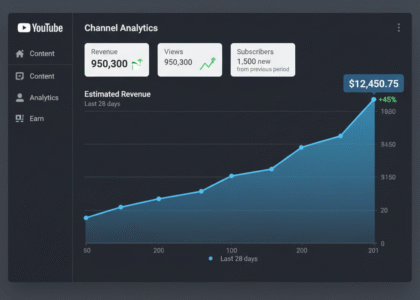Introduction
If you want to take control of your finances or make informed investment decisions, understanding reading financial statements is essential. Whether you’re a beginner investor, freelancer, or someone looking to improve financial literacy, knowing how to interpret key financial documents can help you assess a company’s health, track your own finances, or make smarter money moves.
In this guide, we’ll break down reading financial statements in a simple, actionable way—helping you decode balance sheets, income statements, and cash flow statements like a pro.
Why Financial Statements Matter
Financial statements are like a report card for businesses. They provide a clear picture of a company’s financial performance, helping investors, business owners, and individuals make data-driven decisions. Here’s why they matter:
- Investors use them to assess a company’s profitability and potential growth.
- Business owners rely on them for strategic planning.
- Individuals can use them to track personal financial health and make better financial decisions.
Now, let’s break down the three most important financial statements you need to know.
1. Balance Sheet: The Financial Snapshot

A balance sheet shows a company’s financial position at a specific moment in time. It includes three key components:
Key Elements of a Balance Sheet
- Assets – What the company owns (e.g., cash, inventory, real estate).
- Liabilities – What the company owes (e.g., loans, accounts payable).
- Equity – The company’s net worth (Assets – Liabilities).
Why It’s Important
- Helps investors determine a company’s financial strength.
- Shows if a company has too much debt.
- Gives insight into whether a company is growing its net worth over time.
📌 Tip: Look for a healthy balance of assets vs. liabilities. If liabilities outweigh assets, it could signal financial trouble.
2. Income Statement: Tracking Profitability

The income statement, also called the profit and loss statement (P&L), shows a company’s revenue, expenses, and net profit over a period (e.g., quarterly or annually).
Key Components of an Income Statement
- Revenue – Money earned from sales or services.
- Expenses – Costs of running the business (e.g., salaries, rent, supplies).
- Net Income – The company’s profit after all expenses are deducted.
Why It’s Important
- Shows if a company is making or losing money.
- Helps investors analyze profit trends.
- Indicates financial health and future growth potential.
📌 Tip: A rising net income over time is a good sign, while consistent losses may signal trouble.
3. Cash Flow Statement: Understanding Liquidity

The cash flow statement tracks how cash moves in and out of a company, helping assess its ability to pay bills and invest in growth.
Three Sections of a Cash Flow Statement
- Operating Activities – Cash generated from core business operations.
- Investing Activities – Cash spent on or received from investments (e.g., equipment, real estate).
- Financing Activities – Cash from or paid to investors, banks, or shareholders.
Why It’s Important
- Shows if a company can sustain its operations.
- Highlights potential liquidity issues.
- Helps determine if a company relies too much on borrowing.
📌 Tip: Positive cash flow from operations is a strong sign of a healthy business.
How to Analyze Financial Statements Like a Pro
Here are three simple steps to effectively read and interpret financial statements:
1. Look for Trends
- Compare data from multiple years to identify patterns.
- A company with growing revenue and profits is generally a good sign.
2. Check Debt Levels
- Too much debt can be risky.
- A debt-to-equity ratio (Total Debt ÷ Shareholders’ Equity) above 2.0 may indicate financial trouble.
3. Assess Profit Margins
- Gross Profit Margin = (Revenue – Cost of Goods Sold) ÷ Revenue.
- Net Profit Margin = Net Income ÷ Revenue.
- Higher margins mean better profitability.
Common Mistakes to Avoid When Reading Financial Statements
Even experienced investors can make mistakes when analyzing financial statements. Here are a few pitfalls to watch out for:
Focusing only on revenue: Revenue growth is good, but always check if profits are growing too.
Ignoring cash flow: A company can be profitable on paper but still have cash flow problems.
Not considering external factors: Economic conditions, industry trends, and company strategies affect financial statements.
FAQs About Reading Financial Statements
1. Why are financial statements important for personal finance?
Financial statements help individuals track income, expenses, and net worth—just like businesses use them for financial health checks.
2. How often should I review financial statements?
For businesses, quarterly and annual reviews are common. For personal finance, a monthly review is a great habit.
3. What are red flags in financial statements?
Warning signs include declining revenue, rising debt, and negative cash flow from operations.
4. Do I need an accounting background to understand financial statements?
No! With a basic understanding of balance sheets, income statements, and cash flow statements, anyone can learn to analyze finances effectively.
Final Thoughts
Reading financial statements doesn’t have to be intimidating. By understanding balance sheets, income statements, and cash flow statements, you’ll gain valuable insights into business finances, investment opportunities, and personal financial health.
📢 Want to learn more about making smart financial decisions? Visit GetCashVibe for expert tips and insights!






